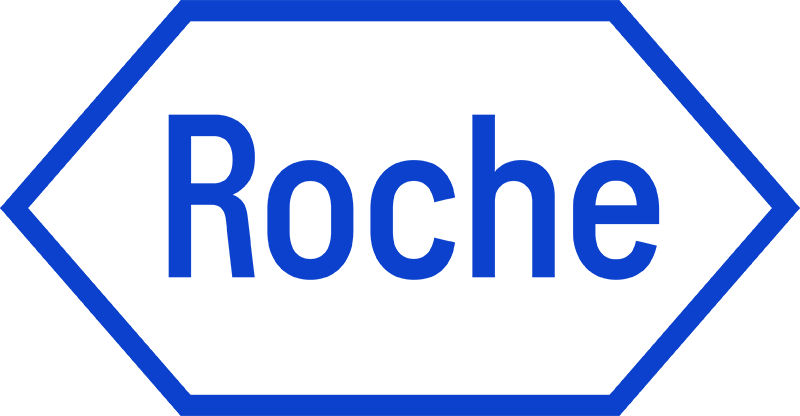Sepsis is a medical emergency that describes the body’s systemic immunological response to an infectious process that can lead to life threatening organ dysfunction and death. Symptoms of sepsis can be unspecific, leading to delayed diagnosis, which in turn results in poor patient outcomes. If left undiagnosed, sepsis can progress into septic shock- a dramatic drop in blood pressure that can lead to organ dysfunction and death. Despite significant advancements in the understanding of the pathophysiology of this clinical syndrome and patient management, sepsis remains one of the major causes of morbidity and mortality in critically ill patients.2 Sepsis is a major global healthcare threat associated with severe disease burden, including high economic costs and health outcomes impact. With 49 million cases worldwide each year, its impact on human life and healthcare systems is staggering.1
Sepsis and septic shock
Availability, intended use and registration status of the presented products may vary depending on the market. Please check with your local Roche affiliate about availability and registration status in your country.

Sepsis affected ~50 million people in 2017 and accounted for 11 million deaths worldwide1

Nearly half of sepsis cases occurred among children leading to 2.9 million global deaths in children under five years of age1

Approximately 85% of sepsis cases and sepsis-related deaths worldwide occurred in low- and middle-income countries1
Sepsis and septic shock have a multitude of causal factors, some weidling more prominent than others. Septic shock is defined as a subset of sepsis in which particularly profound circulatory, cellular, and metabolic abnormalities are associated with a greater risk of mortality than with sepsis alone. This is associated with hospital mortality rates greater than 40%.3.
The largest contributors to sepsis cases and sepsis-related deaths were:
- Lower respiratory tract infections (e.g. Pneumonia): Infections like pneumonia frequently serve as a point of origin for sepsis. The lungs, vital for oxygenation, are susceptible to invading microorganisms capable of inciting a septic response.
- Bloodstream infections (including Staphylococcus aureus, malaria, typhoid paratyphoid): Pathogens traveling through the circulatory system increase risk of infection.
- Maternal-neonatal infections: The neonatal period, within the first four weeks of life, presents a high-risk scenario for infections. Neonatal sepsis, emerging as a bloodstream infection, demands vigilant monitoring and swift intervention to avert dire consequences.
- Urinary tract infections: urinary tract infections can increase risk of sepsis particularly when left unaddressed, making time to diagnosis critical.
- Gastrointestinal/diarrheal infections: When infected, the gastrointestinal tract, containing microbial ecosystems, can lead to severe sepsis and septic shock if left undiagnosed and treated.

- High heart rate or weak pulse
- Confusion or disorientation
- Extreme pain or discomfort
- Fever, shivering, or feeling very cold
- Shortness of breath
- Clammy or sweaty skin
Sepsis is most likely to develop in immunocompromised, pediatric, and elderly populations; or those who have an indwelling medical device or catheter. Sepsis rates are on the rise because of a rising elderly population, increased longevity of individuals with chronic diseases such as cancer, technological advances in medicine that lead to more frequent use of invasive medical devices, and the extensive use of antibiotics.4
- Older persons
- Pregnant or recently pregnant women
- Neonates
- People with no spleen
- People with autoimmune diseases
- People with HIV/AIDS
- People with kidney disease
- People with cancer
- Patients in intensive care units
- Hospitalized patients
- People with liver cirrhosis


Sepsis is one of the leading causes of death in neonates and we need to do more to prevent the heartache that this brings to many families around the world. Matt Sause, CEO of Roche Diagnostics4
Neonatal sepsis is an infection involving the bloodstream within the first four weeks of life and results in high rates of morbidity and mortality. Neonatal sepsis can initially present with subtle signs, but can rapidly progress to multisystem organ failure. Early detection and prompt intervention are essential to prevent severe and life-threatening complications.
The first 28 days of life (the neonatal period) are the most vulnerable time for child survival. Every year, an estimated 2.5 million neonates die in their first month of life, accounting for nearly one-half of deaths in children under 5 years of age. An estimated 375,000 neonatal deaths due to sepsis occurred globally in 2018, which represented 15% of all neonatal deaths, making sepsis one of the leading causes of newborn death.5
The prognosis of neonatal sepsis depends on early recognition and appropriate treatment, although signs and symptoms are often nonspecific and may overlap with those of other severe conditions, such as meningitis and pneumonia. These clinical signs include respiratory distress and cyanosis, apnoea, feeding difficulties, lethargy or irritability, and poor perfusion.
Effective sepsis and septic shock prevention is possible. You can take the following steps to help reduce your risk factors of sepsis:

Prevent infections
Take care of chronic conditions and get the recommended vaccinations to help prevent some infections.

Good hygiene
Wash your hands and keep cuts or wounds clean and protected.

Know the signs
If in doubt of your symptoms seek a medical assessment.

Act fast
Sepsis is a medical emergency. If you have an infection and are getting worse seek medical care immediately. Diagnostic tests can help determine the type of infection and best treatment options.
Prompt diagnosis and treatment are of utmost importance when diagnosing and treating sepsis. Whether symptoms manifest at home or within a clinical setting, prompt action can be the difference between life and death.
Blood cultures are considered the gold standard for diagnosis but require up to 48 hours. Therefore, blood-based biomarkers that reflect the host immune response can support physicians in early diagnosis and identifying patients at increased risk.6
Although severe sepsis is deadly, prompt recognition and treatment gives patients a better chance at full recovery and returning to lead a normal life.

Each location along the journey offers opportunities for:

Screening
Should a patient be assessed for sepsis?

Diagnosis
Does a patient have sepsis?

Treatment
What type of treatment is necessary for the patient?

Prognosis
Where does a patient go next?
As mankind continues its widespread use of antibiotics, antimicrobial resistance will continue to pose a threat to the global healthcare system.
As new antibiotics are developed and used widely around the world, bacteria evolve in parallel, developing resistance and outrunning our ability to treat common infections. Infections caused by antibiotic-resistant bacteria are difficult to treat, killing an estimated 700,000 people a year worldwide.7
The world learned of the dangers of antimicrobial resistance with the rise of hospital-acquired infections, like methicillin-resistant Staphylococcus aureus (MRSA). Today, there are a growing number of infectious diseases developing resistance to common treatments, including certain respiratory tract infections and sexually transmitted infections. Looking ahead, the prevalence of drug-resistant pathogens is expected to rise.
In the absence of a comprehensive effort to combat emerging drug resistance, infections due to multi-drug resistant organisms are predicted to be the leading cause of death worldwide by 2050.7
Stewardship programs optimize antibiotic use, prescribe them judiciously, and monitor treatment outcomes to prevent resistance and safeguard the efficacy of critical medications for the future.
References
- Rudd KE, et al. Lancet. 2020;395(10219):200-211
- Gyawali, B.; Ramakrishna, K.; Dhamoon, AS. (2019). Sepsis: The evolution in definition, pathophysiology, and management. SAGE Open Med.
- Singer M, Deutschman CS, Seymour CW, Shankar-Hari M, Annane D, Bauer M, Bellomo R, Bernard GR, Chiche JD, Coopersmith CM, Hotchkiss RS, Levy MM, Marshall JC, Martin GS, Opal SM, Rubenfeld GD, van der Poll T, Vincent JL, Angus DC. The Third International Consensus Definitions for Sepsis and Septic Shock (Sepsis-3). JAMA. 2016 Feb 23;315(8):801-10. doi: 10.1001/jama.2016.0287. PMID: 26903338; PMCID: PMC4968574.
- Global Sepsis Alliance [Internet; cited 2024 March 7]. Available from: https:/www.global-sepsis-alliance.org/sepsis
- Fleischmann-Struzek, C., Goldfarb, D. M., Schlattmann, P., Schlapbach, L. J., & Reinhart, K. (2018). The global burden of paediatric and neonatal sepsis: a systematic review. The Lancet Respiratory Medicine, 6(3), 223-230.
- Turgman O, Schinkel M, Wiersinga WJ. Host Response Biomarkers for Sepsis in the Emergency Room. Crit Care. 2023 Mar 21;27(1):97. doi: 10.1186/s13054-023-04367-z. PMID: 36941681; PMCID: PMC10027585.
- World Health Organization. New report for urgent action to avert AMR crisis. https://www.who.int/news-room/detail/29-04-2019-new-report-calls-for-urgent-action-to-avert-antimicrobial-resistance-crisis. Accessed August 2023.

